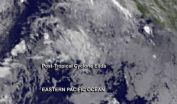(Press-News.org) Addressing climate change will require substantial new investment in low-carbon energy and energy efficiency – but no more than what is currently spent on today's fossil-dominated energy system, according to new research from the International Institute for Applied Systems Analysis (IIASA) and partners.
To limit climate change to 2° Celsius, low-carbon energy options will need additional investments of about US $800 billion a year globally from now to mid-century, according to a new study published in the journal Climate Change Economics. But much of that capital could come from shifting subsidies and investments away from fossil fuels and associated technologies. Worldwide, fossil subsidies currently amount to around $500 billion per year.
"We know that if we want to avoid the worst impacts of climate change, we need to drastically transform our energy system," says IIASA researcher David McCollum, who led the study. "This is the first comprehensive analysis to show how much investment capital is needed to successfully make that transition."
The study, part of a larger EU research project examining the implications and implementation needs of climate policies consistent with the internationally agreed 2° C target, compared the results from six separate global energy-economic models, each with regional- and country-level detail. The authors examined future scenarios for energy investment based on a variety of factors, including technology progress, efficiency potential, economics, regional socio-economic development, and climate policy.
Investments in clean energy currently total around $200 to 250 billion per year, and reference scenarios show that with climate policies currently on the books, this is likely to grow to around $400 billion. However, the amount needed to limit climate change to the 2° target amounts to around $1200 billion, the study shows.
The energy investments needed to address climate change continue to be an area of large uncertainty. By comparing the results from multiple models, the scientists were able to better define the costs of addressing climate change.
"Nearly all countries say that they're on board with the 2° target; some have even made commitments to reduce their greenhouse gas emissions. But until now, it hasn't been very clear how to get to that point, at least from an investment point of view. It's high time we think about how much capital is needed for new power plants, biofuel refineries, efficient vehicles, and other technologies—and where those dollars need to flow—so that we get the emissions reductions we want," says McCollum.
IIASA Energy Program Director Keywan Riahi, another study co-author and project leader, says, "Given that energy-supply technologies and infrastructure are characterized by long lifetimes of 30 to 60 years or more, there's a considerable amount of technological inertia in the system that could impede a rapid transformation. That's why the energy investment decisions of the next several years are so important: because they will shape the direction of the energy transition path for many years to come."
The study shows that the greatest investments will be needed in rapidly developing countries, namely in Asia, Latin America, and Sub-Saharan Africa.
"Energy investment in these countries is poised to increase substantially anyway. But if we're serious about addressing climate change, we must find ways to direct more investment to these key regions. Clever policy designs, including carbon pricing mechanisms, can help." says Massimo Tavoni, researcher at the Fondazione Eni Enrico Mattei, a climate research center in Italy, and overall coordinator of the LIMITS project, of which the new study is a part.
The researchers note that their analysis of future investment costs does not attempt to quantify the potentially major fuel savings from switching from fossil fuels to renewable sources, such as wind and solar energy. As shown in the IIASA-led Global Energy Assessment, such savings could offset a considerable share of increased investment on a global scale.
INFORMATION:
This study provided an important input into the Intergovernmental Panel on Climate Change Fifth Assessment Report, Working Group III, Chapter 16 on Cross-cutting Investment and Finance Issues.
Reference
McCollum D, Nagai Y, Riahi K, Marangoni G, Calvin K, Pietzcker R, Van Vliet J, van der Zwaaan B. (2014). Energy investments under climate policy: a comparison of global models. Climate Change Economics Vol. 04, No. 04. DOI: 10.1142/S2010007813400101
About the LIMITS project
This study was conducted as part of the Low Climate Impact Scenarios and the Implications of Required Tight Emissions Control Strategies (LIMITS) project, a European Union Seventh Framework Program (FP-7)-supported collaboration between the International Institute for Applied Systems Analysis (IIASA), the Fondazione Eni Enrico Mattei (FEEM) in Italy, the Potsdam Institute for Climate Impact Research (PIK) in Germany, the, the Joint Research Centre of the European Commission, Central European University, the National Development and Reform Commission Energy Research Institute in China, the Indian Institute of Management (IIM), the National Institute for Environmental Studies (NIES) in Japan, and the Pacific Northwest National Laboratory (PNNL) in the US.
For more information contact:
David McCollum
Research Scholar
Energy
+43(0) 2236 807 586
mccollum@iiasa.ac.at
Katherine Leitzell
IIASA Press Office
Tel: +43 2236 807 316
Mob: +43 676 83 807 316
leitzell@iiasa.ac.at
About IIASA:
IIASA is an international scientific institute that conducts research into the critical issues of global environmental, economic, technological, and social change that we face in the twenty-first century. Our findings provide valuable options to policy makers to shape the future of our changing world. IIASA is independent and funded by scientific institutions in Africa, the Americas, Asia, Oceania, and Europe. http://www.iiasa.ac.at
Putting a price tag on the 2° climate target
2014-07-02
ELSE PRESS RELEASES FROM THIS DATE:
Hazardous drinking in UK athletes linked with alcohol industry sponsorship
2014-07-02
New research from the University of Manchester (UK) and Monash University (Australia) shows a link between alcohol sponsorship and hazardous drinking in UK athletes.
The study, published online today in the scientific journal Addiction, is the first to examine alcohol sponsorship of athletes in the UK, and comes at a time when there are calls in the UK, Ireland, Australia, New Zealand, and South Africa for greater restriction or bans of alcohol sponsorship and advertising in sport.
Researchers surveyed more than 2000 UK sportspeople from universities in the North West, ...
More people means more plant growth, NASA data shows
2014-07-02
Ecologist Thomas Mueller uses satellite data to study how the patterns of plant growth relate to the movement of caribou and gazelle. The research sparked an idea: Would the footprint of human activity show up in the data?
Mueller, of the University of Maryland in College Park (now at the Biodiversity and Climate Research Center in Frankfurt) teamed up with university and NASA colleagues to find out. Their new analysis shows that on a global scale, the presence of people corresponds to more plant productivity, or growth.
Specifically, populated areas that have undergone ...
Wind shear wipes out Tropical Cyclone Elida
2014-07-02
Strong northwesterly wind shear took its toll on Tropical Storm Elida, weakening it to a remnant low early on July 2. In infrared satellite imagery from NOAA's GOES-West satellite, Elida appeared to be a tight swirl of low clouds devoid of any deep convection.
Infrared satellite instruments are used to see the heat objects emit. During night-time hours when there's no sunlight to light clouds, satellites like NOAA's Geostationary Operational Environmental Satellite or GOES-West satellite looks at clouds in infrared light. Infrared data from NOAA's GOES-West satellite ...
Georgia Tech researchers develop 'Encore' to monitor Web access
2014-07-02
Georgia Tech researchers have created a tool to monitor the accessibility of Web pages around the world that can be installed by adding a single line of code to a web page. The tool, Encore, runs when a user visits a website where the code is installed and then discreetly collects data from potentially censored sites.
The researchers hope the data they collect will allow them to determine the wheres, whens and hows of what's blocked, as well as identify ways to get around restricted access.
"Web censorship is a growing problem affecting users in an increasing number ...
NASA's TRMM satellite spots heavy rainfall around Tropical Storm Arthur's center
2014-07-02
Tropical Storm Arthur appears to be ramping up, and NASA's Tropical Rainfall Measuring Mission or TRMM satellite spotted heavy rainfall occurring around the storm's center on July 1 when it was centered over the Bahamas.
Those heavy rains are expected to affect the southern U.S. coastline over the next several days as the National Hurricane Center expects Arthur to strengthen into a hurricane. On July 2, the NHC issued a Hurricane Watch for Bogue Inlet to Oregon Inlet, North Carolina and Pamlico Sound. In addition, a Tropical Storm Watch is in effect for the east coast ...
NASA sees a weaker Tropical Storm Douglas
2014-07-02
NASA's Aqua satellite captured a picture of Tropical Storm Douglas as it began moving into cooler waters in the Eastern Pacific Ocean. Those cooler waters, coupled with drier air are expected to bring about the storm's demise, according to the National Hurricane Center.
A visible image of Tropical Storm Douglas was taken by the Moderate Resolution Imaging Spectroradiometer or MODIS instrument aboard NASA's Aqua satellite on July 1 at 21:20 UTC (5:20 p.m. EDT). The thickest band of thunderstorms appeared over the southern semi-circle of the weakening storm while bands ...
Squid sucker ring teeth material could aid reconstructive surgery, serve as eco-packaging
2014-07-02
Squid tentacles are loaded with hundreds of suction cups, or suckers, and each sucker has a ring of razor-sharp "teeth" that help these mighty predators latch onto and take down prey. In a study published in the journal ACS Nano, researchers report that the proteins in these teeth could form the basis for a new generation of strong, but malleable, materials that could someday be used for reconstructive surgery, eco-friendly packaging and many other applications.
Ali Miserez and colleagues explain that in previous research, they discovered that sharp, tough squid sucker ...
'Green buildings' have potential to improve health of low-income housing residents
2014-07-02
The "green building" trend is often associated with helping the environment by using eco-friendly materials and energy-saving techniques, but these practices are designed to improve people's health, too. Now scientists are reporting evidence that they can indeed help people feel better, including those living in low-income housing. Published in ACS' journal Environmental Science & Technology, the study found that certain health problems of public housing residents who moved into green buildings noticeably improved.
Gary Adamkiewicz, Meryl Colton and colleagues note that ...
Toward a new way to keep electronics from overheating
2014-07-02
Computer technology has transformed the way we live, but as consumers expect ever more from their devices at faster speeds, personal computers as well as larger electronic systems can overheat. This can cause them to slow down, or worse, completely shut down. Now researchers are reporting in the ACS journal Industrial & Engineering Chemistry Research that liquids containing nanoparticles could help devices stay cool and keep them running.
Rahman Saidur and colleagues point out that consumers demand a lot out of their gadgets. But that puts a huge strain on the tiny parts ...
Overcoming light scattering: New optical system sees deeper inside tissue
2014-07-02
VIDEO:
After the diffuser, the information content of the object is scrambled so that the light distribution at the pixelated sensor looks like the familiar speckle noise.
Click here for more information.
Optical imaging methods are rapidly becoming essential tools in biomedical science because they're noninvasive, fast, cost-efficient and pose no health risks since they don't use ionizing radiation. These methods could become even more valuable if researchers could find a way ...




